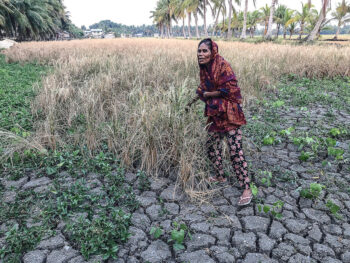SURIGAO CITY (MindaNews/02 October) — Two lawmakers in Caraga are pushing for the creation of the Lake Mainit Development Authority to make it a “model for sustainable development that is anchored on social mobilization and environmental protection”.
In a statement, Rep. Guillermo A. Romarate Jr., (2nd District, Surigao Del Norte), and Rep. Erlpe John M. Amante (2nd District, Agusan del Norte) said they have a filed a bill for this purpose and are hopeful it would be passed by Congress.
Lake Mainit, the fourth largest lake in the country, occupies an area of 17,060 hectare and straddles the provinces of Agusan del Norte and Surigao del Norte.
“With the creation of the Authority, it is envisioned that Lake Mainit will become a major economic engine in Caraga Region and the whole of Mindanao,” the statement issued on Wednesday said.
The lawmakers noted that the lake “is endowed by nature with rich natural resources that remain to be untapped up to now. Being a sanctuary for fishes, crustaceans, and other marine life, Lake Mainit has become a major host of aquaculture and other livelihood activities for locals living near its shores.”
“Currently, a hydropower plant is also being constructed using the lake’s outflow current as a testament that Lake Mainit can become a major course of power in Mindanao,” they added.
Amante and Romarate said the sceneries around the lake rival that of other well-known tourist spots, and its location along the Pan-Philippine Friendship Highway makes tourism development even more feasible.
Three town mayors, Ramon B. Mondano of Mainit, Dominador G. Esma of Alegria, both in Surigao del Norte, and Mayor Aristotle E. Montante of Kitcharao in Agusan del Norte have expressed support to the bill.
They said it would be a big step towards the protection of the lake from environmental degradation.
According to the 2009 study conducted by Mindanao State University-Naawan Foundation for Science and Technology Development titled “Sustainable Fisheries Management Program for Lake Mainit, the lake faces threats of habitat degradation due to pollution from agriculture and mining, destructive fishing practices and the use of chemicals or poisons have reduced the aquatic biodiversity of the lake.
Fishermen said their catch of white goby, locally known as pijanga and the dominant fish species in the lake, was noted to have decreased in recent years. (See related article).
The MSU-Naawan study attributed the decline in fish stocks to “unsustainable or destructive fishing practices, too many fishers, highly diversified fishing technology, and lack of enforcement of fisheries and environmental policies.”
“Income from fishing is no longer sustainable in many areas, and lakeshore communities fear that rare and endemic fishes in the lake will be lost due to overfishing,” the study further said. (Roel N. Catoto/MindaNews)
